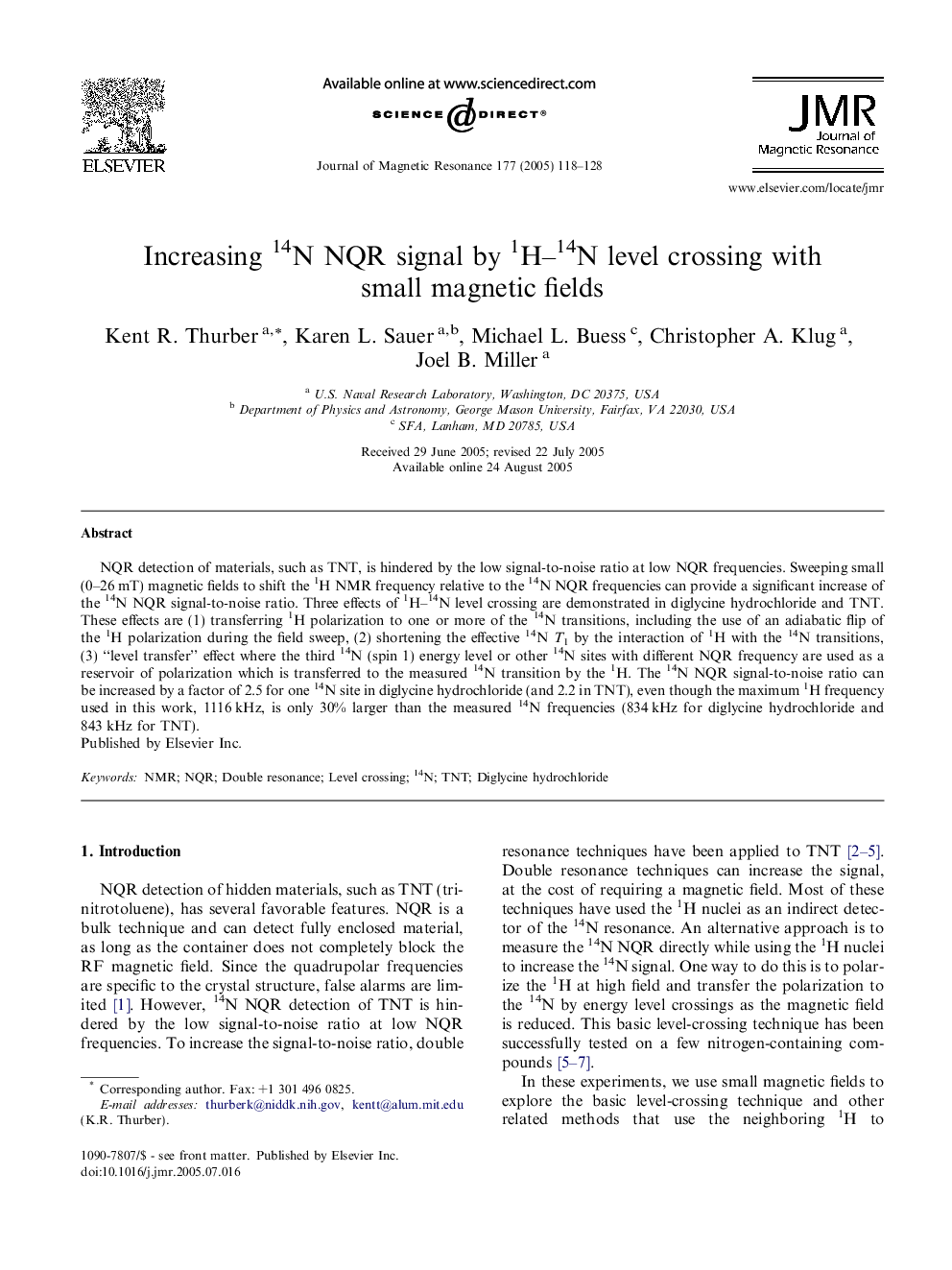| کد مقاله | کد نشریه | سال انتشار | مقاله انگلیسی | نسخه تمام متن |
|---|---|---|---|---|
| 9587290 | 1393231 | 2005 | 11 صفحه PDF | دانلود رایگان |
عنوان انگلیسی مقاله ISI
Increasing 14N NQR signal by 1H-14N level crossing with small magnetic fields
دانلود مقاله + سفارش ترجمه
دانلود مقاله ISI انگلیسی
رایگان برای ایرانیان
کلمات کلیدی
موضوعات مرتبط
مهندسی و علوم پایه
شیمی
شیمی تئوریک و عملی
پیش نمایش صفحه اول مقاله

چکیده انگلیسی
NQR detection of materials, such as TNT, is hindered by the low signal-to-noise ratio at low NQR frequencies. Sweeping small (0-26Â mT) magnetic fields to shift the 1H NMR frequency relative to the 14N NQR frequencies can provide a significant increase of the 14N NQR signal-to-noise ratio. Three effects of 1H-14N level crossing are demonstrated in diglycine hydrochloride and TNT. These effects are (1) transferring 1H polarization to one or more of the 14N transitions, including the use of an adiabatic flip of the 1H polarization during the field sweep, (2) shortening the effective 14N T1 by the interaction of 1H with the 14N transitions, (3) “level transfer” effect where the third 14N (spin 1) energy level or other 14N sites with different NQR frequency are used as a reservoir of polarization which is transferred to the measured 14N transition by the 1H. The 14N NQR signal-to-noise ratio can be increased by a factor of 2.5 for one 14N site in diglycine hydrochloride (and 2.2 in TNT), even though the maximum 1H frequency used in this work, 1116Â kHz, is only 30% larger than the measured 14N frequencies (834Â kHz for diglycine hydrochloride and 843Â kHz for TNT).
ناشر
Database: Elsevier - ScienceDirect (ساینس دایرکت)
Journal: Journal of Magnetic Resonance - Volume 177, Issue 1, November 2005, Pages 118-128
Journal: Journal of Magnetic Resonance - Volume 177, Issue 1, November 2005, Pages 118-128
نویسندگان
Kent R. Thurber, Karen L. Sauer, Michael L. Buess, Christopher A. Klug, Joel B. Miller,